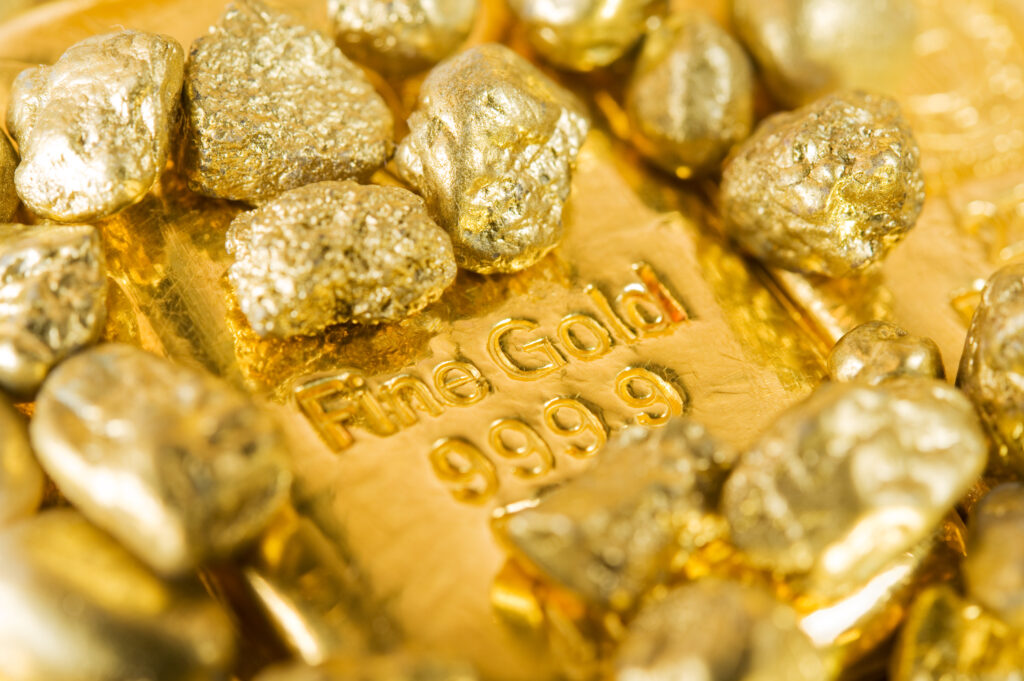From its use as jewelry and currency to its important role in technology and manufacturing, gold has captivated mankind for centuries. But there’s more to this precious metal than meets the eye – from its ancient origins to modern-day applications, gold is an element packed with interesting facts and stories. We’ll explore five remarkable details about gold that you may not have known existed – revealing a whole new side of the beloved precious metal!
Gold is the most malleable and ductile of all metals, meaning it can be stretched or hammered into thin sheets without breaking
Gold has been used for centuries due to its malleability and ductility, which allows artisans to shape it easily into any desired form. Gold is the only metal that can be shaped without breaking – a property that makes it ideal for creating jewelry and other decorative items. Gold also has an attractive yellow color that stands out from other metals and resists tarnishing, making it even more desirable in many applications. As a result of these unique qualities, gold has been a favored precious metal throughout history, with various cultures treasuring its beauty and rarity.
It is one of the few elements that can be found in nature as a pure metal, free from any other elements
Gold is an impressive element! Even famously difficult-to-locate metals, such as silver and platinum, are often found in the ground combined with other elements. However, gold can be found by itself – a rare occurrence! This is due to the rare properties that make it resistant to corrosion and make it the ideal choice for jewelry, coins, bars, and other valuable items. Gold has been used by many cultures throughout history, not just because of its beauty but because it is malleable enough to form intricate designs yet strong enough to maintain its form over long periods. It’s no wonder why this precious element remains as sought after as ever!
Gold is so rare that an ounce could fit in a cube measuring just 17 millimeters across
Gold is an incredibly valuable material, and for good reason; it was found to be so rare on our planet that all of the gold ever mined in history could fit into a cube no larger than 17 millimeters wide. That amount may seem small, but amazingly it is enough to fill three Olympic-sized swimming pools. Gold is a resilient metal that has been used due to its beauty in jewelry, coins, and decorations since the dawn of recorded history. In modern times, its uses have expanded even further as its numerous unique properties make it ideal for electronic applications such as wiring and microchips. For both past and present civilizations, gold truly does never lose its value.
The largest gold nugget ever found was so big it weighed over 200kg and measured nearly 5 feet long
The largest gold nugget ever discovered, found in Victoria, Australia in 1869, weighed over 200kg and stretched nearly 5 feet long. It surpassed the expectations of all that heard the news! Many experts have theorized this particular gem-like rock was part of a much larger gold deposit, but no other remnants were found. To this day people look for similar chunks of precious golden treasure estimated to be worth millions of dollars. We may never know who originally unearthed such a remarkable find but it still stands as the largest gold nugget ever known.
The world’s gold reserves are estimated to be around 171,300 metric tons, with the United States holding the largest share at 8,133 metric tons
It is estimated that around 171,300 metric tons of gold exist worldwide, with the United States leading the pack in terms of holdings – owning 8,133 metric tons of the precious metal. This equates to about 6.4% of the world’s known reserves. While this may seem like a tiny portion of the total amount, it is still more than four times what any other country has in its stores. By comparison, Germany is ranked second and holds only 3,369 metric tons; Switzerland comes in third with 1,040 metric tons. India, China and Russia come after that with less than half a ton each in total gold reserves. All countries combined are reported to have over 50 times more gold than just silver and platinum combined!
These gold facts show just how unique and valuable this shiny metal is. It is both malleable and ductile, often found in nature as a pure metal free from any other elements, rare enough to be measured in ounces, and of course it has been treasured by humans throughout history across cultures. As evidenced by these facts, it’s no wonder that gold is among the most sought after materials in the world today. Whether you are an avid collector or a casual fan of the precious metal, understanding interesting facts like these can help you appreciate its grandeur even more. All this begs the question: what stories does future gold have to tell us?

